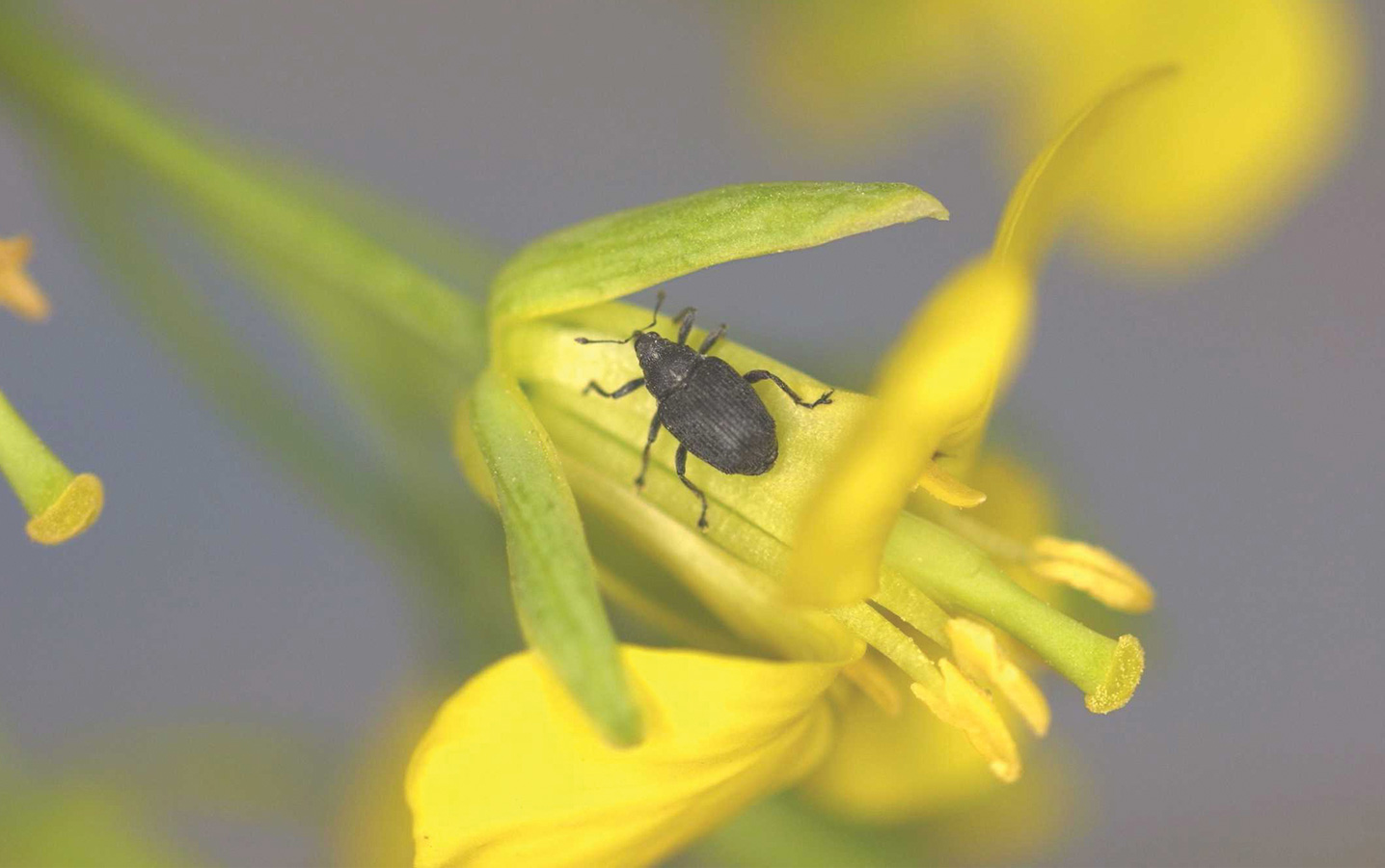Spraying for weevils reduces lygus bugs and increases yield
Key practice: Managing cabbage seedpod weevils (when they reach thresholds) with a single insecticide application at early flower stage can reduce pod-stage abundance of lygus bugs and may increase yield by an average of 1.5 bu./ac.
Project title, Lead researcher: “Management of lygus bugs and seedpod weevil in canola at the farm level,” 2010-14, Hector Carcamo, Agriculture and Agri-Food Canada (AAFC) Lethbridge
Grower organization funder: ACPC
Cabbage seedpod weevil (CSPW) and lygus bug are both chronic pests of canola in Western Canada. It is important to periodically scout for these insects with a sweep net starting at late bud stage, and also to consult economic threshold charts to determine the need for insecticidal control. The results of this study show there are additional benefits to spraying for weevils at the early-flower stage (at or above the economic threshold).
The goal of this four-year project in Alberta was to determine through farm studies the best practices for managing a combination of CSPW and lygus bug as a pest complex. This includes the definition of combined thresholds for the early flower stage when product appli-
cation is most effective at reducing weevil damage. One particular area of focus was the impact of this treatment on the abundance of lygus bugs at early pod stage, which is when they tend to be the most damaging.
Overall, controlling CSPW with insecticide application at the early flower stage reduced the pod-stage abundance of lygus bugs.
Data was collected from a total of 75 sites between 2010 and 2014, with
41 fields situated in the Lethbridge/Fort Macleod area and 34 in the Vulcan/Medicine Hat area. These locations contain overlapping populations of both CSPW and lygus bug. With the exception of three southern fields that were planted to Polish (B. rapa) canola, all sites grew Argentine (B. napus).
Seeding date, which varied widely ranging from late April to early June, had a clear influence on both insects, but in opposite ways. Fields planted early attracted the most weevils and fewest lygus bugs while those planted late showed the opposite. Planting within the normal seeding period (first two weeks of May) resulted in moderate numbers of both pests.
Yield data was collected through a combination of quadrant samples from all fields and from farmers’ combine monitors in 20 fields. This study found that spraying insecticide at early flower increased yield by an average of 1.5 bu./ac. over that of the untreated check. However, there was not a linear relationship between yield and the abundance of the two pests studied.
Researchers also looked at the effect of weather conditions on the abundance of CSPW and lygus bug. Precipitation levels reported from both regional weather stations and on-farm rain gauges were tested for correlations to insect counts during the pod stage. This data suggested that the localized rain gauges were a much better tool to predict insect population.
High rainfall on a field over a short time period during the early pod stage when lygus bugs are small has the potential to significantly reduce their numbers. After being knocked to the ground, lygus bugs at this stage are susceptible to natural enemies or may not be able to make their way back onto the canola plants.
The results of this study combined with ongoing cage tests will be used to provide more accurate and combined thresholds for best management of both CSPW and lygus bugs.
Conclusion
Insect management recommendations based on this study are:
- Start scouting regularly for both CSPW and lygus bug at late bud (yellow buds on bolted crop).
- Plant canola early and consult economic thresholds to determine the need for application of insecticide.
- To conserve and protect natural enemies, do NOT spray fields where weevils are below threshold as an attempt to reduce pod-stage lygus bug numbers. The resulting benefits of predation and other factors including rainfall may contribute
to control of this pest. - Sweep for lygus bugs after a heavy rainfall before making a spraying decision.
- It is very important to make decisions based on thorough field monitoring rather than practices applied on neighbouring fields or reported local and regional weather conditions.
- Tank mixing insecticide with fungicide spray in full flower is not recom-mended for weevils or lygus bugs and can be harmful to pollinators and natural enemies.






